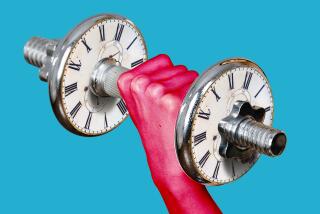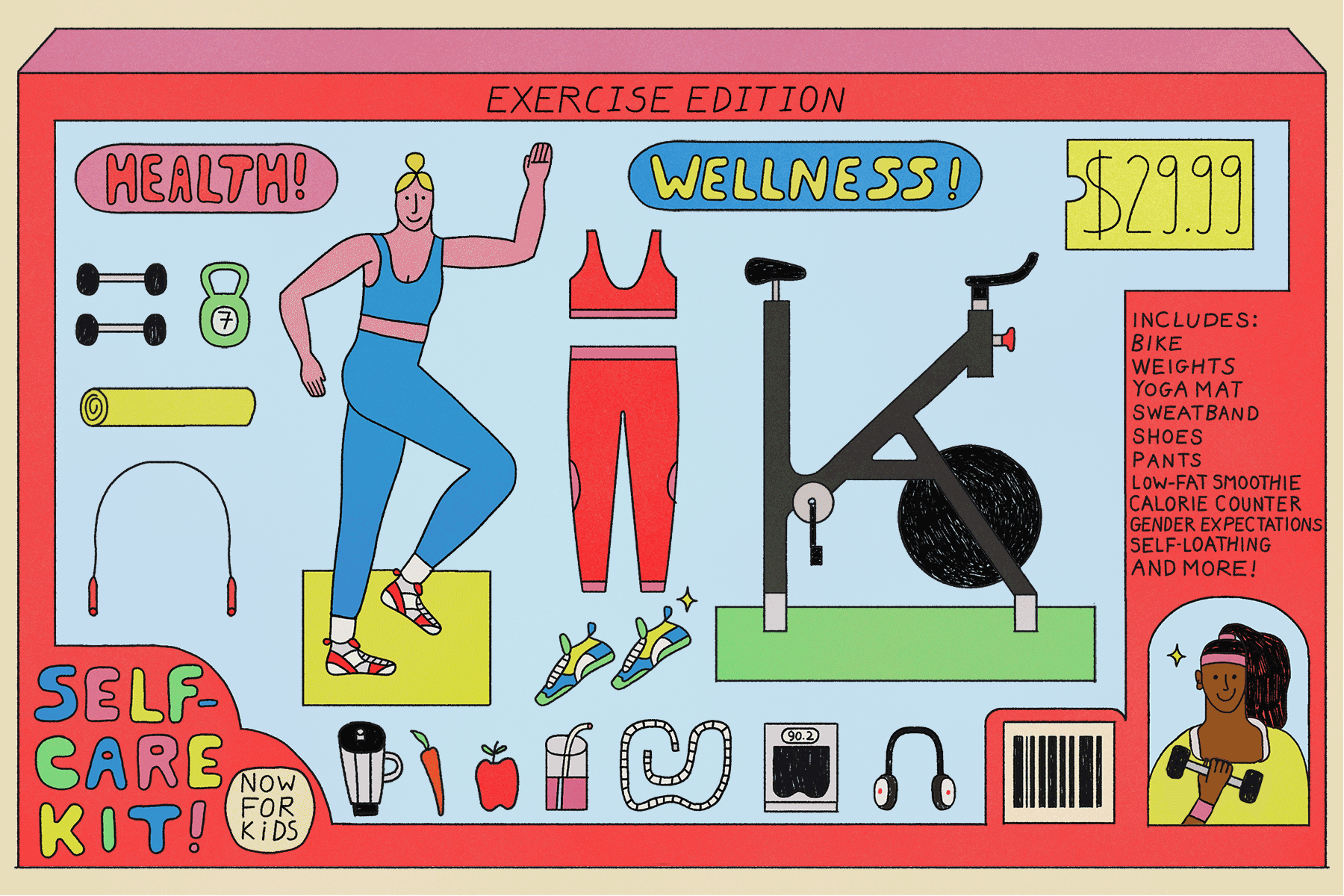Don’t Make the Kids Wait to Weight Train
- Share via
Few areas of fitness are as surrounded by myth as strength training. One common misconception, that lifting weights makes women look like men, kept many females out of the weight room for years. Kids also were warned to refrain from strength training because of the false notion that it was unsafe and ineffective before adult hormones kicked in.
During the past decade, however, these myths have been debunked by a growing body of scientific evidence documenting the importance of strength training for virtually everyone, from elementary schoolers to nursing home residents.
Today, working out with weights is one of the most popular fitness activities among men and women, particularly those older than 40 who want to combat the age-related decline in muscle mass and bone density.
More children are muscling into strength training too, many at the growing number of gyms offering youth programs. “There’s a strong demand from parents who want working out to be a family activity,” says Maeve McCaffrey, spokeswoman for the International Health, Racquet and Sports Clubs Assn. “Many schools don’t provide physical education anymore, and parents are trying to set a good example of a healthy lifestyle and help their kids get fit.”
While some children pump iron at their parents’ gyms, others join one of the emerging “kiddie clubs,” which cater to the school-age set. Children’s Health & Executive Club in Chicago features child-size aerobic and strength equipment for its 325 school-age members and is planning franchises in other locations. Several manufacturers are meeting the demand with free weights and exercise machines scaled for youthful bodies.
*
But kids--and adults--don’t have to use special equipment to strengthen their muscles. “You can strength train using only your own body weight, such as by doing push-ups or climbing a rope or going up stairs,” says Lee Brown, director of the Human Performance Research Lab at Florida Atlantic University in Boca Raton.
When you move your body against resistance--a dumbbell, your own weight or a machine--you’re strength training, says Brown, who will present an overview of research at the National Strength and Conditioning Assn.’s Youth Strength Summit in July.
Despite the misconceptions, Brown says, “strength training has nothing to do with bodybuilding, which is a competitive sport for adults.” Strength training is a systematic program of exercises designed to increase muscle strength, endurance and power, which in turn can improve fitness, appearance and athletic performance, and reduce the risk of injury.
“Half of all youth sports injuries could be prevented if children were better prepared for the game,” says Avery Faigenbaum, an assistant professor of exercise physiology at the University of Massachusetts in Boston.
Just as athletes get in shape during the off-season, Faigenbaum says, “children should participate in a preseason conditioning program for six to eight weeks prior to sports participation.” This program should include aerobics, flexibility and strength training. “Every major medical society, including the American College of Sports Medicine and the American Academy of Pediatrics, now promotes youth strength training,” notes Faigenbaum, lead author of the college’s statement on youth strength training. “But it’s essential that these programs are designed for children and supervised by a qualified adult.”
*
Faigenbaum says research on 7- to 12-year olds indicates that pre-adolescents can increase their strength by about 40% by doing an eight- to 12-week program of strength training consisting of two or three weekly sessions. Such activity may be particularly beneficial for girls, who in later life are at greater risk for osteoporosis.
“Bones are most responsive to the stimulus of resistance training during childhood and adolescence,” Faigenbaum says. “This is an ideal time to increase bone-mineral density and build up the so-called bone bank.’
Girls need not believe the myth that they’ll develop bulky muscles by strength training. While strength training will make girls’ muscles stronger, females of any age (and pre-adolescent boys) don’t have enough of the male hormone testosterone needed to increase the size of the muscle.
Despite strength training’s many health benefits, “there is potential for serious injury if safety standards . . . are not followed,” notes the American College of Sports Medicine statement, which recommends that children:
* Get instruction and supervision from a qualified adult, who has experience with children.
* Always warm up and cool down.
* Get a medical examination first if they have known or suspected health problems.
* Do one to three sets of six to 15 repetitions, two to three times a week on nonconsecutive days.
* Avoid maximal lifting (hefting the heaviest weight possible in a single repetition).
* Emphasize proper technique and safety, not weight.
* Have fun.
*
Carol Krucoff writes a column on health and fitness issues for the Washington Post.


